
| Yellow Jewel LUCIINI, THECLINAE, LYCAENIDAE, PAPILIONOIDEA | (donherbisonevans@yahoo.com) and Stella Crossley |
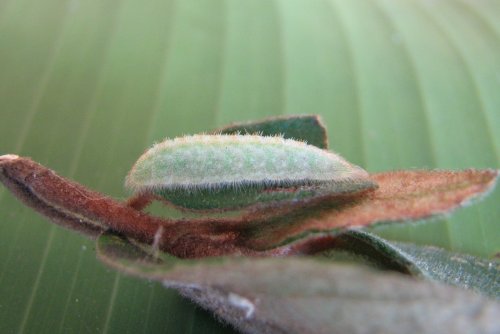
(Photo: courtesy of Bob Miller and Ian Hill)

| Yellow Jewel LUCIINI, THECLINAE, LYCAENIDAE, PAPILIONOIDEA | (donherbisonevans@yahoo.com) and Stella Crossley |

(Photo: courtesy of Bob Miller and Ian Hill)
The Caterpillar of this species is flattened and has a corrugated appearance. It is coloured green with a pale dorsal band and darker mottled markings. It usually rests on a silk pad on a leaf of its foodplant.
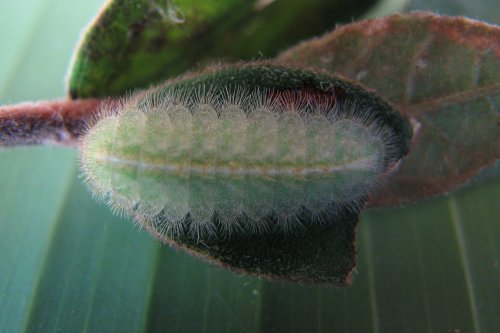
The caterpillar has been found feeding on plants in STERCULIACEAE such as
as well as various Pomaderris species in RHAMNACEAE such as
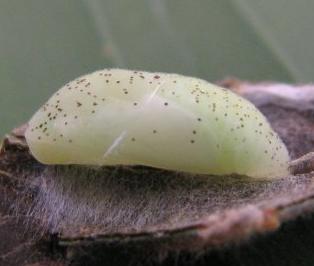
|
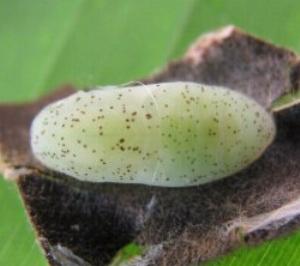
|
The caterpillar pupates under a leaf of its food plant. The pupa is rounded, green, and spotty, and about 1.3 cms. long.
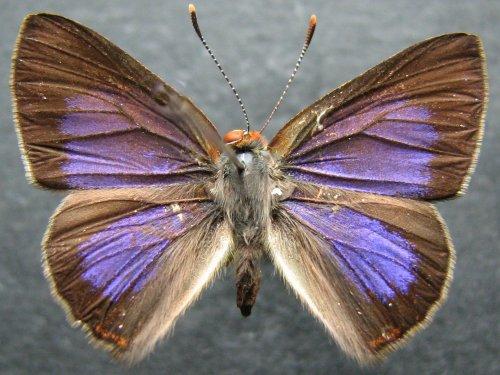
The adult males are metallic blue on top with black wing margins. They have two small orange spots on the tail of each hind wing.
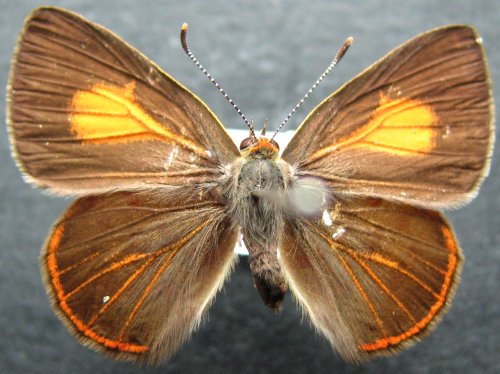
The adult females are dark brown on top with an orange blotch on each wing.

The undersurfaces of the wings of both sexes are similar: yellow with orange bands outlined in metallic green. The wingspan is about 3 cms.
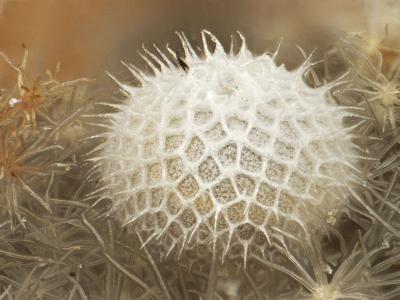
The eggs of this species are white, round, flattened, ridged, spiky, and pitted. They have a diameter of about 0.8 mm. They are usually laid singly under leaves of a foodplant.
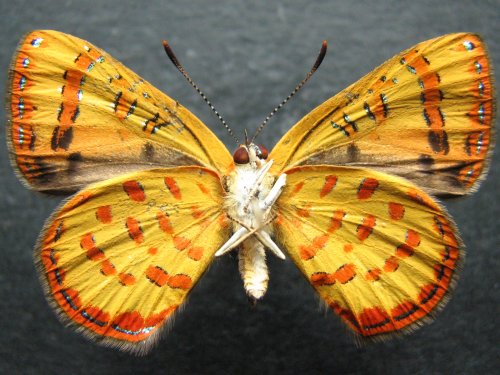
Further reading :
Jean-Baptiste Alphonse Dechauffour de Boisduval,
Faune Entomologique de L'Ocean Pacifique,
in M.J. Dumont d'Urville:
Voyage de Decouvertes de la Corvette l'Astrolabe,
Division 7, Part 1 : Lepidopteres (1832), p. 81, No. 8..
Michael F. Braby,
Butterflies of Australia,
CSIRO Publishing, Melbourne 2000, vol. 2, pp. 664-666.
Frank Jordan & Helen Schwencke,
Create More Butterflies : a guide to 48 butterflies and their host-plants
Earthling Enterprises, Brisbane, 2005, pp. 51, 62.
 caterpillar |  butterflies |  Lepidoptera |  moths |  caterpillar |
(updated 2 July 2008, 23 December 2023)